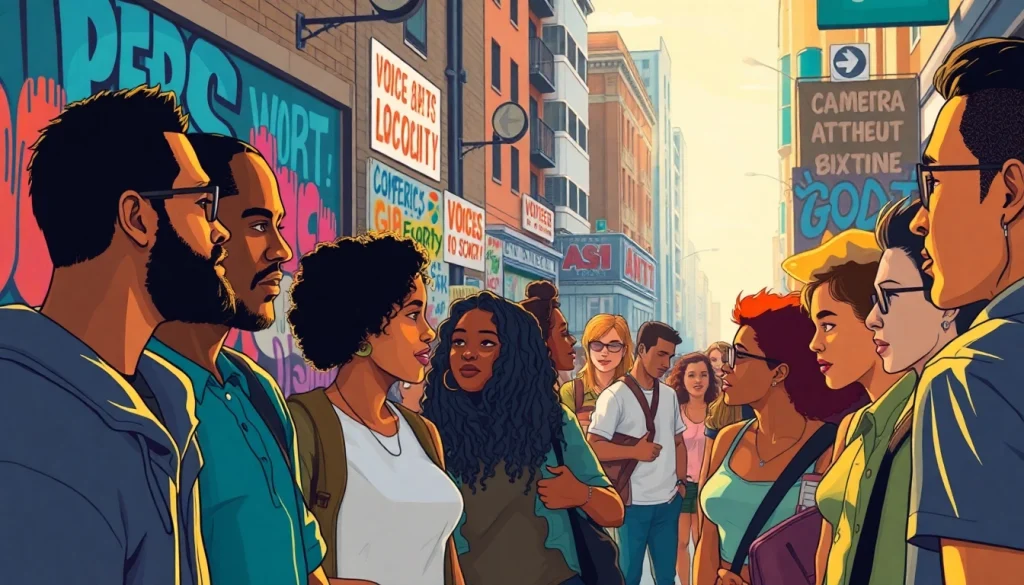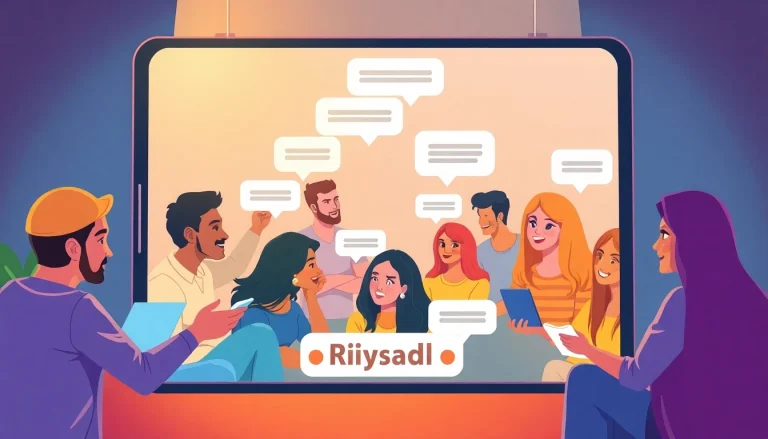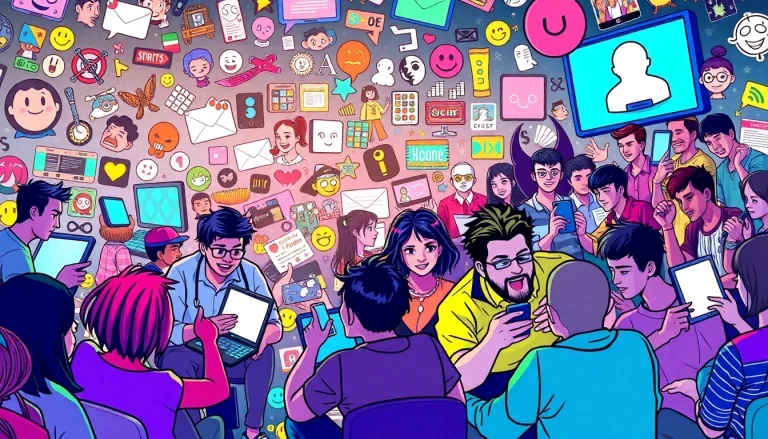
What is Social Commentary?
Defining the Concept of Social Commentary
Social commentary is a means of expressing insights, critiques, and reflections on societal issues through various forms of art, literature, and media. It serves to hold a mirror to society, provoking thought and inspiring change by highlighting the complexities of social norms, injustices, and lived experiences. In essence, social commentary goes beyond mere observation; it calls for action and awareness. Artists, writers, and musicians alike engage in this critical dialogue, contributing to the cultural landscape where their voices resonate with audiences seeking understanding and social justice. The social commentary today flourishes in an era of digital media, where messages can spread rapidly and inspire movements across diverse communities.
Historical Context and Evolution
Historically, social commentary has evolved dramatically, reflecting the values, challenges, and transformative times of eras past. From the satirical works of Jonathan Swift in the 18th century to the revolutionary pamphlets during the American and French revolutions, social commentary has frequently emerged from the crucible of societal change. The 20th century brought about significant shifts in expression, especially during the civil rights movement, when artists like Nina Simone and Bob Dylan used their music as forms of protest and calls for equality. Today, social commentary manifests in countless forms, from social media posts to immersive art installations, proving that while the mediums may shift, the purpose remains constant: to provoke thought and instigate dialogue.
Importance in Modern Society
In contemporary society, the importance of social commentary cannot be overstated. As the world faces myriad challenges – including climate change, systemic racism, and economic inequality—artistic voices become critical in shaping public discourse. Social commentary empowers marginalized voices, offering perspectives that may otherwise be overlooked or silenced. Moreover, with heightened access to social media and digital platforms, artists have unprecedented opportunities to influence and mobilize audiences toward social change. The resulting dialogue fosters a sense of community and shared purpose, pushing forward an agenda of inclusivity and justice.
The Role of Art in Social Commentary
Visual Arts as a Medium for Expression
Visual arts play a pivotal role in social commentary by providing immediate and often visceral representations of societal issues. Artists utilize various mediums, including painting, sculpture, and installation, to convey messages that resonate emotionally with viewers. For example, Banksy’s street art frequently critiques capitalism and war, inviting observers to reflect on societal failures in an accessible format. Moreover, contemporary exhibitions such as the “Black Lives Matter” murals serve as public displays of solidarity and activism, demonstrating the power of visual art to transform spaces into platforms for social discourse.
Literature and its Impact on Social Narratives
Literature serves as a powerful tool for social commentary by offering narratives that challenge the status quo and provide deeper insights into the human condition. From classics like George Orwell’s “1984,” which critiques authoritarianism, to modern works like “The Hate U Give” by Angie Thomas, which tackles racial inequity, literature exposes readers to diverse experiences and perspectives. These narratives prompt readers to question their beliefs and engage with issues that may affect their communities. Furthermore, literature can serve as a historical record, preserving important social critiques for future generations.
Music as a Vehicle for Protest and Awareness
Music has long been a vehicle for social commentary, providing anthems that rally movements and inspire change. Throughout history, artists ranging from Joan Baez to Kendrick Lamar have utilized their platforms to address issues such as war, racism, and inequality. Protest songs echo the sentiments of their times, often becoming synonymous with social movements. The genre of hip-hop, in particular, has emerged as a powerful medium for social commentary, offering a voice to marginalized communities and addressing systemic injustices through personal storytelling and impactful lyricism.
Examples of Effective Social Commentary
Iconic Works in Visual Art
Throughout history, many visual artworks have left a profound imprint on society by addressing critical issues. For instance, Guernica by Pablo Picasso acts as a powerful anti-war statement, condemning the bombings of Guernica during the Spanish Civil War. Likewise, photographs from the Civil Rights Movement, such as those taken by Gordon Parks, expose the brutality of racial segregation and have spurred public outrage and subsequent action. These works highlight the potentials of art to elicit emotional responses and mobilize collective action.
Literary Pieces that Resonate Today
Several literary works resonate with audiences today by challenging injustices and prompting reflection. “To Kill a Mockingbird” by Harper Lee, addressing racial injustice and moral growth, remains relevant as discussions about race continue to evolve. Similarly, Margaret Atwood’s “The Handmaid’s Tale” draws alarming parallels to contemporary political issues regarding women’s rights, sparking widespread discussions through its adaptation into a popular television series. These literary pieces transcend their time, serving as critical commentaries that inspire readers to reflect on their world.
Musical Works that Challenge Societal Norms
Music often serves as a catalyst for social change, with artists like Billie Eilish and Childish Gambino using their platforms to critique modern societal norms. Eilish’s “Your Power” addresses themes of power dynamics and exploitation, while Gambino’s “This Is America” explores racial violence and the complexities of American identity. Both artists utilize their music to grapple with uncomfortable truths, encouraging listeners to engage in difficult conversations surrounding the issues they present.
Challenges in Conveying Social Commentary
Navigating Censorship and Controversy
Delivering social commentary often entails navigating the pitfalls of censorship and controversy. Artists can face backlash for their messages, sometimes leading to censorship that stifles free expression. For instance, controversial artworks such as Chris Ofili’s “The Holy Virgin Mary,” which depicts the Virgin Mary adorned with elephant dung, sparked outrage and debates on artistic freedom. Artists need to be prepared for the challenges that arise when their work intersects with contentious social issues, developing strategies to defend their artistic integrity while fostering critical conversations.
Audience Reception and Misinterpretation
Understanding audience reception is critical for effective social commentary, as interpretations can vary widely based on individual perspectives. An artist’s intent may not always align with how their work is received, leading to misinterpretation or alienation of certain groups. Engaging with audiences and fostering dialogue can mitigate these challenges, allowing for enriched understanding and shared meanings. Artists must remain open to feedback and reflections while clearly articulating their messages and intentions.
Balancing Artistic Integrity with Social Messaging
Striking a balance between artistic integrity and the desire to convey social messages can be challenging for artists. While some may feel pressured to conform to popular expectations, it is crucial that they remain authentic to their creative vision. The process of creating socially aware art should not dilute the individual voice of the artist. By maintaining authenticity, artists can create genuinely powerful works that resonate deeply with audiences while advocating for social change.
Best Practices for Delivering Social Commentary
Engaging Your Audience Effectively
Effective social commentary requires thoughtful engagement with audiences. This can be achieved through interactive methods, such as encouraging public feedback, hosting discussions, or organizing community events. Utilizing social media platforms to facilitate dialogue can also enhance engagement, allowing artists to reach wider audiences and create spaces for exchange. Understanding the demographics and interests of your target audience will also enable you to tailor your message effectively and foster connection.
Utilizing Multiple Mediums for Broader Impact
Leveraging multiple mediums can amplify the impact of social commentary. Artists can integrate visual art, literature, and music into cohesive projects that resonate across various platforms. For instance, social campaigns that utilize short documentaries, photography, and music can create powerful narratives that engage diverse audiences. By diversifying their approach, artists can expand their reach and influence while appealing to different sensibilities.
Measuring the Impact of Your Message
Measuring the effectiveness of social commentary is essential for understanding its impact on audiences and the broader society. Artists can employ surveys, social media analytics, and public feedback to assess how their work resonates and influences perspectives. Additionally, examining shifts in community engagement or awareness surrounding specific issues can offer insights into the efficacy of messaging. By critically evaluating impact, artists can refine their approach, ensuring their commentary remains relevant and compelling.






